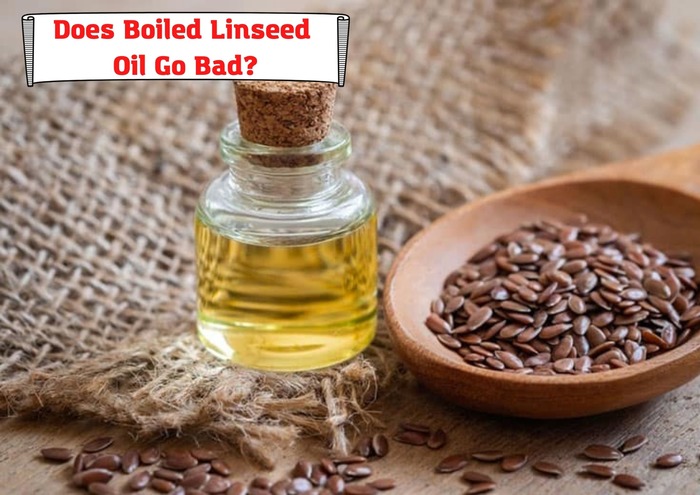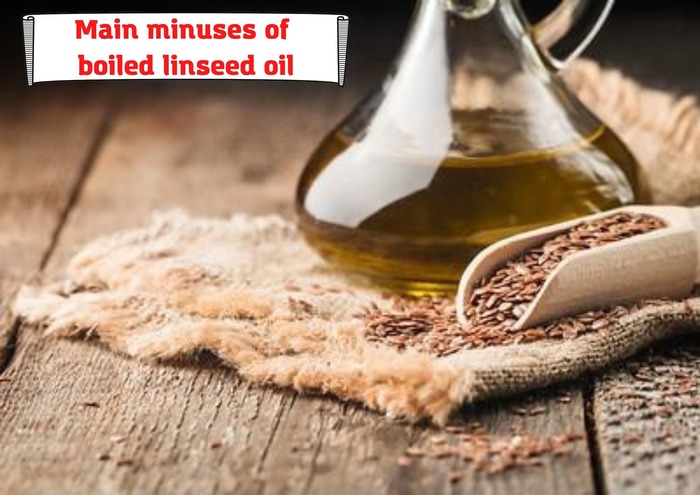
Boiled linseed oil is a great finish for interior wood projects. This oil gives a mellow finish which looks really good. It underlines the wood structure and makes it look even better than you might expect. Of course, BLO is a very popular choice among woodworkers, but it still causes a few questions. Even people who have crafted woods for dozens of years tend to ask if boiled linseed oil can go bad.
Today we’ll discuss this and will also answer some other questions related to the use of boiled linseed oil. Please don’t extrapolate whatever we say today about BLO to raw linseed oil. The latter is also used as a wood finish, but it has completely different specifications and tasks. Again: what we are talking today about is Boiled Linseed Oil.
So, we’ll discuss such topics:
- Will boiled linseed oil go bad in a year or five years of shelf life?
- What are the main pros and cons of BLO?
- Finishing with boiled linseed oil – main features and techniques.
- Popular mistakes when using boiled linseed oil as a wood finish.
Let’s dive in!
What’s the expiry period of boiled linseed oil?
As you may know, oils usually have a long shelf life. Linseed oil is not an exception. Although manufacturers have to write some expiry date on their cans and bottles, we know that the actual shelf life of this product is much longer. To tell you the truth, there is no limitation until your BLO is liquid and doesn’t look like it has been divided into components. And even in that case, you can still stir and use it.
Here are some facts that say about the long shelf life of boiled linseed oil:
- this oil can last as long as 30 or 40 years if properly closed;
- some manufacturers write an expiry period of 3 years, while others say it’s 5 or 7 years;
- people admit using BLO that they bought back in the 1980s and still having good results;
- woodworkers say that they even store the oil open and it doesn’t harden over months.
But still, to make its shelf life longer, you should take some precautions. Don’t leave the can or bottle open because the oil will start polymerizing and hardening. If oxygen comes into reaction with the product, some parts of its components will evaporate which will bring to complete hardening. After a couple of months of bad storage, the oil will harden completely. You will see the small hard ball on the bottom of the can instead of a certain amount of liquid linseed oil.
Also, temperatures and sunlight may shorten the shelf life of the product. If you want your BLO to be given to your grandchild in 40 years, just store it in a cool and dark place and keep an eye on that lid. That’s it – you won’t need to store it in any special place to prolong its shelf life.
What is actually boiled linseed oil?

The product comes from flax plants, mainly from their seeds. This oil is also used in the production of nutritional supplements and other products. But a good deal of all seeds that are cultivated commercially all over the world goes to the production of linseed oil and boiled linseed oil wood finishes.
As the name suggests, you might think that some manufacturers boil raw linseed oil to produce BLO. But today things are made differently. BLO is manufactured with the help of chemicals that are added to raw oil to have optimal viscosity and make the oil more feasible for wood finishing. Some spirits and solvents are added to improve the drying time and different specs of the oil.
This makes BLO an ideal choice for wood finishing, but it also makes it a very bad option for consumption. Some types of boiled linseed oil may even contain heavy metals and can poison a person or any other living organism. Of course, when hardening, BLO emits some fumes that you shouldn’t inhale.
Now we’ve come up to the point where you should understand why BLO of different brands may have a big price difference. One manufacturer uses dangerous chemicals and heavy metals while the other one tries to make its BLO products as safe and user-friendly as possible. Never buy the cheapest options – they can be deadly dangerous for you.
By the way, the components of BLO may affect the shelf life, too. Cheaper components will evaporate quickly and make your boiled linseed oil harden fast. While more expensive options may live for years on your shelf and let you use it for your small projects without buying a new can every other month.
What are the main pros of using boiled linseed oil?
Well, after we know that buying expensive and high-quality products is a better idea, let’s move to discussing the actual advantages of boiled linseed oil.
And here we know quite a lot of them:
- You will get a deep wood grain design after proper application. Your project will really look natural and nice.
- BLO covers wood and creates wonderful protection. Even when the surface is scratched, you can easily deal with it by using sandpaper and a little time.
- Most of the oils that are sold within the US and Europe are quite eco-friendly and natural.
- It’s a penetrative product that protects the wood against moisture, humidity changes, temperature changes, and other factors.
- BLO is friendly for many other wood finishes and protection products. Using this kind of finish is always a good idea.
Many woodworkers will use boiled linseed oil mixing it with some other finishes like turpentine or varnishes. The oil is relatively easy to apply and it’s forgiving, so many beginners should choose linseed oil if the conditions allow it. But still, like every other product, BLO has some disadvantages.
Main minuses of boiled linseed oil

The product can live on your shelf much longer than on your project. Unfortunately, many disadvantages of natural oils are presented when you use BLO. For example, it’s not the best option to use at any wood projects that are going to be placed outside.
Here we’ve found some main drawbacks of boiled linseed oil:
- you will have to re-oil the surface from time to time;
- your wet cup or plate may leave a white ring;
- scratches are possible (though, they are easy to repair);
- the material may slightly yellow over time;
- if you spill coffee or tea on the surface, it may change color a little.
As you see, the drawbacks of using BLO are basically the same as the minuses of other natural oils.
How to finish wood with BLO?
Boiled linseed oil is known to be one of the best products for beginners in woodcrafts because it’s really simple to use. What you need to do is to sand the wood to get a smooth surface, then clean it thoroughly and apply some boiled linseed oil using a rag. After 20 minutes, use the same rag to wipe off the excess oil. Boiled linseed oil should harden for at least 24 hours before you apply the next coat. You will also want to sand with fine-grit sandpaper before applying the next coat and also to clean the surface thoroughly after sanding.
Make sure you wait for at least a month after you put the final coat of BLO before you start assembling or using your project. This time is needed for boiled linseed oil to completely cure.
Popular mistakes people make with BLO
- Not disposing of the rags correctly. There have been some issues when the rags soaked with boiled linseed oil were spontaneously put on fire. Just put the rags into the water to avoid this or burn them.
- Not waiting enough time between coats. Make sure you wait for at least 24 hours but no more than 5 or 7 days between each coat. This way your project will be beautiful and the protection the oil creates will be quite good.
- Not wiping the excess oil after applying it. It’s important to wipe off the excess oil because otherwise, you will just need to wait for ages till you can apply the next coat.
- Using brush instead of a rag. It doesn’t make sense to use a brush for boiled linseed oil because it will take you much more time and it will be much harder to apply the oil correctly.
- Not closing the can. You should thoroughly seal the can when you wait for the next layer to be applied. Otherwise, your boiled linseed oil will harden right in the can.
Final words
Well, we’ve discussed everything we knew about boiled linseed oil and we hope you will get some cool facts from our article. We want to say in the end that BLO is not a bad finish for your wood. It still has some disadvantages, but it’s really easy to apply, it’s really good in terms of safety and natural ingredients.
Some woodworkers don’t use BLO at all because they believe it can put your workshop on fire. But we’ve seen so few messages when people said about ignition of BLO that we consider them low-chance accidents rather than the regular drawback of the material.
- Can You Unmix Paint: Techniques, Consequences, Alternatives - February 23, 2024
- Does Primer Need to be Mixed? Effective Primer Application - February 22, 2024
- How to Make Old Paint Usable Again: Retrieving and Preserving Paint - February 21, 2024



